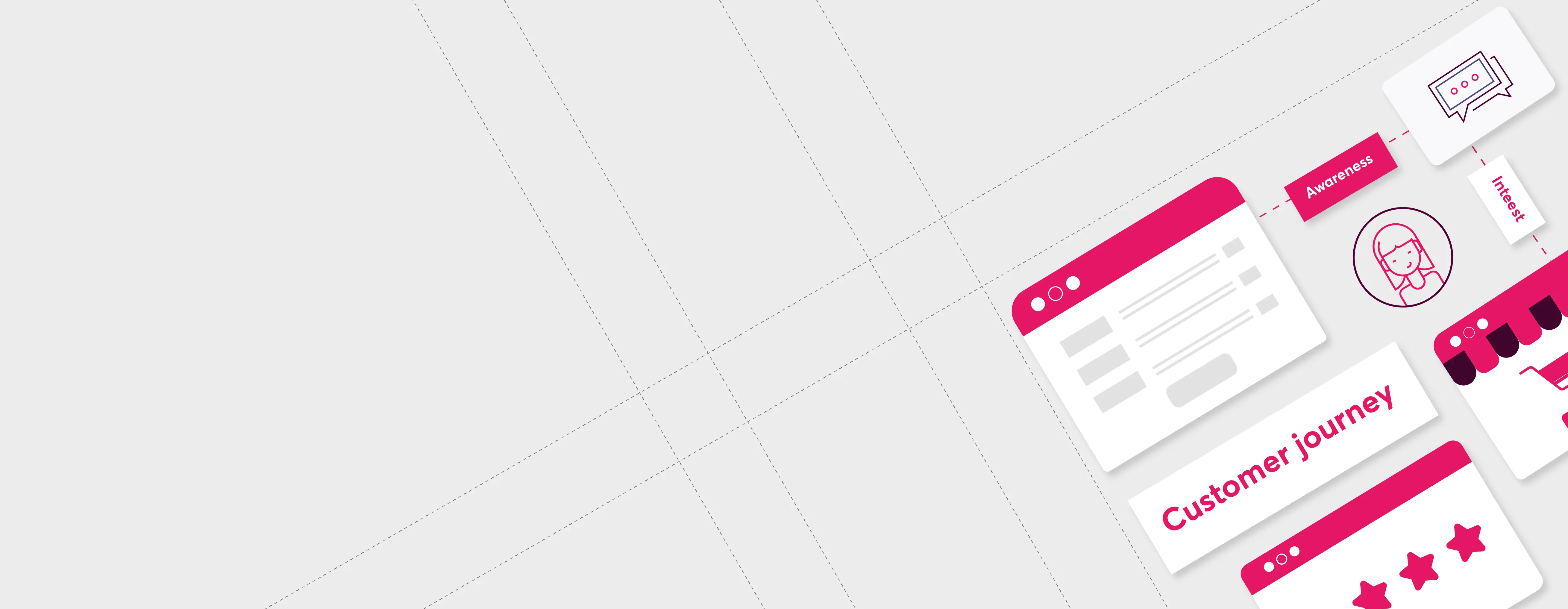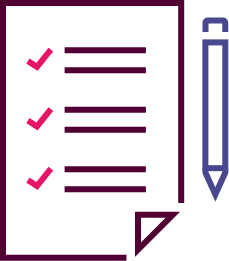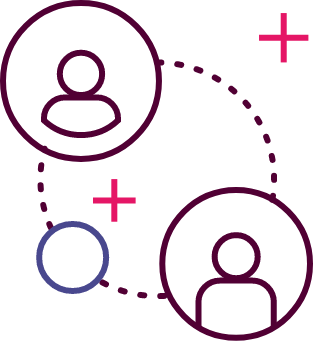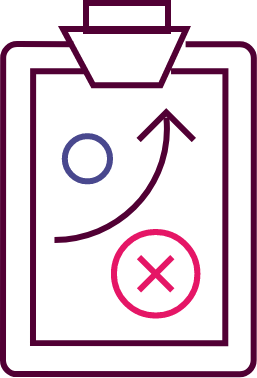
Customer Journey Mapping
You get this from working with Customer Journeys
Novicell's method takes you confidently through the following 5 steps

1. Clarification of goals and scope
What do you want to achieve with the Customer Journey process? Are there specific goals you want to move? How many target groups must Customer Journeys be prepared for? Should the process initiate measures across the entire business or in a single channel?

2. Mapping the steps in your Customer Journey
Together, we draw up our best offer for the concrete Customer Journey for the selected target groups, step by step and based on your existing knowledge of the customers. The customers then verify our bid on the mapped Journey – can they recognise the steps?

3. Collection of data
We collect existing knowledge in the organisation about the customers' experiences. Other analyses (qualitative and quantitative) are planned and carried out. This can be, for example, data from Google Analytics combined with customer interviews or focus groups. The collected data about the customers' experiences is linked to each step of the customer journey.

4. Design of your future Customer Journey
The insights about the customer experience, as it looks today, are summarised in a visual presentation of where you perform well and where you perform less well. Based on this, we design your wishes for the future Customer Journey and plan the steps you must prioritise to improve the customer experience.

5. Planning of concrete measures
A brainstorm workshop ensures us plenty of concrete ideas for improvement initiatives and innovation projects that can realise our wishes for the future Customer Journey. Finally, the efforts are prioritised and described, and a business case is prepared for the entire process. The selected efforts are then implemented, and the impact is measured and evaluated continuously.
When is it relevant to work with Customer Journeys?
A Customer Journey course provides valuable insights into your customers' needs, expectations and challenges and is thus an obvious starting point for your future:
- Digital Strategy
- Omnichannel and Marketing Automation Strategy
- Innovation processes and development of products and services
- Work with content
- Development of a new website and general optimisation of the digital channel
Speak to us about Customer Journey Mapping opportunities
The simplest way to get in touch is to complete the form.
We aim to get back to you within a couple of working hours.
If you'd prefer to call +44 (0)20 8144 8142
Or we can chat via email [email protected]
Read about related services
Our digital specialists create brands built to last. We deliver tangible results through well-thought-out strategy and design. Learn more here.
At Novicell, we offer business analysis with a focus on CMS platforms, GAP analysis, process mapping and much more. Read all about analysis here.
A digital channel strategy creates value for your customers and business
What is the price of delays in your digital initiatives? Is there enough momentum for your innovation? Which architecture/platforms should you choose? Get the answers here.



